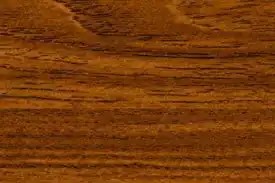DIBETOU Wood
Discover the unique characteristics, applications, and properties of DIBETOU wood, known for its yellow-brown color with black streaks or veins taking a golden glint.
Wood Description
DIBETOU wood is characterized by its yellow-brown or grey-brown color, fine texture, and interlocked grain. The wood emits an ammoniac odor when green or rewetted and has black deposits in the pores.

Background
Dibetou, also known as Lovoa trichilioides, is a type of exotic wood native to the regions of Central Africa. It is a prized and valuable wood known for its natural beauty, durability, and various uses.
Dibetou is characterized by its light to medium brown color, with variations ranging from beige to dark brown. The warm color palette gives the wood a naturally appealing and inviting appearance. In addition to its beautiful look, dibetou has a straight to slightly interlocked grain, adding an interesting texture to its surface.
This wood is renowned for its resistance to insects and termites, making it a sustainable option for exterior applications such as decking, siding, and outdoor furniture. Its natural resistance to weathering and decay agents contributes to its longevity, reducing maintenance needs and associated costs.
Due to its hardness and stability, dibetou is also used in the construction of flooring, parquet, and furniture. It can withstand daily wear and mechanical stresses, making it an ideal choice for high-traffic areas.
In terms of woodworking, dibetou is easy to work with, allowing for the creation of intricate and detailed pieces. It can be cut, planed, and sanded with ease, making it a favored material among craftsmen and furniture makers.
It is important to note that dibetou is an endangered wood species due to overexploitation and deforestation. Therefore, it is crucial to choose dibetou from sustainable and certified sources to support forest preservation and biodiversity.
Physical Properties
- Specific Gravity: 0.53
- Crushing Strength: 47 MPa
- Monnin Hardness: 2.3
- Static Bending Strength: 72 MPa
Durability and Treatability
DIBETOU wood is moderately to poorly durable against fungi and is durable against dry wood borers. It is susceptible to termites and is classified as poorly or not permeable in terms of treatability. The wood requires appropriate preservative treatment in scenarios of temporary humidification.